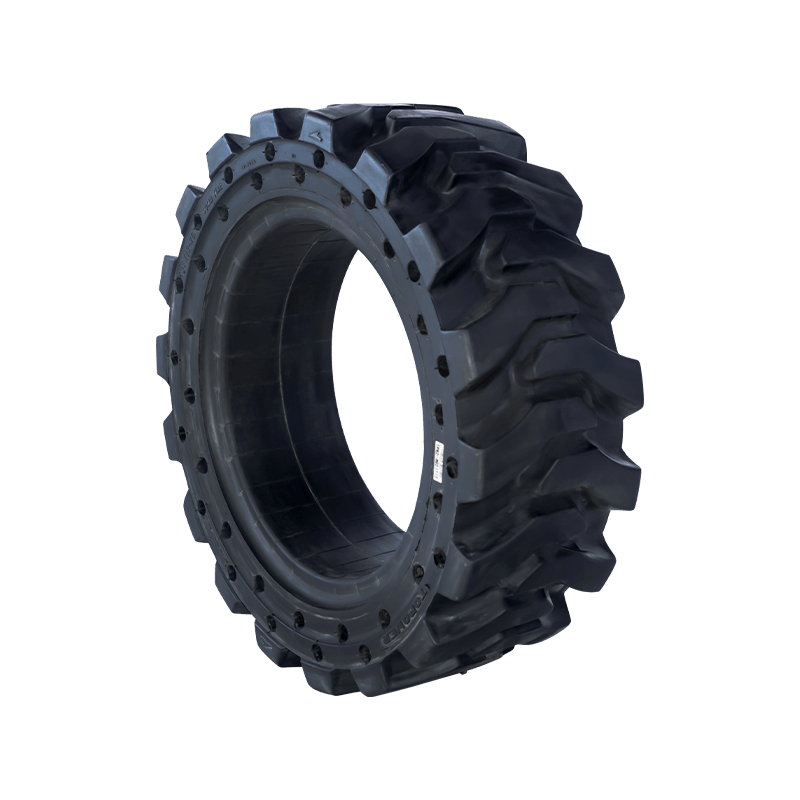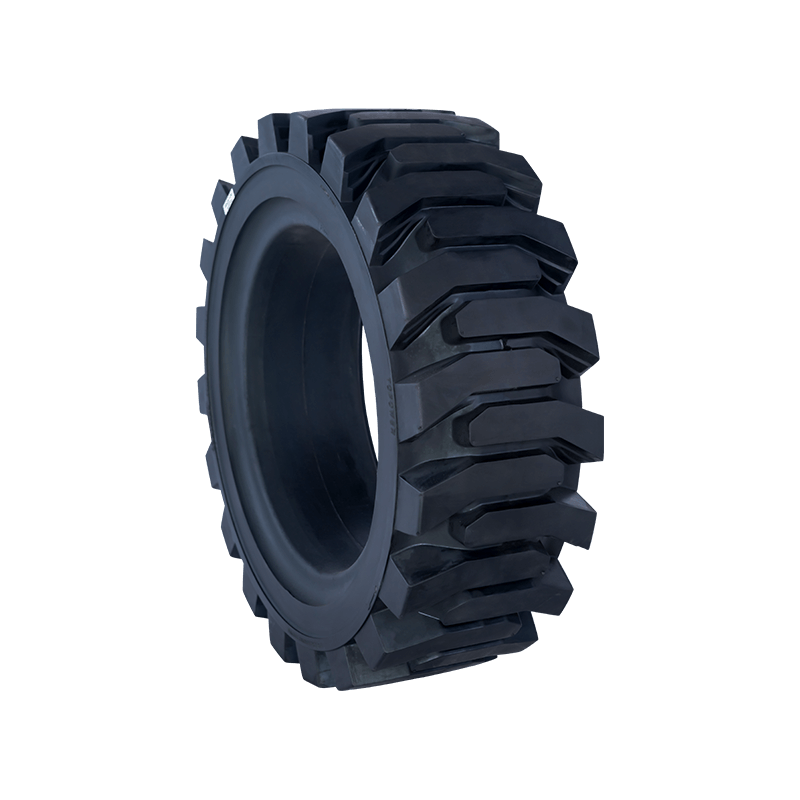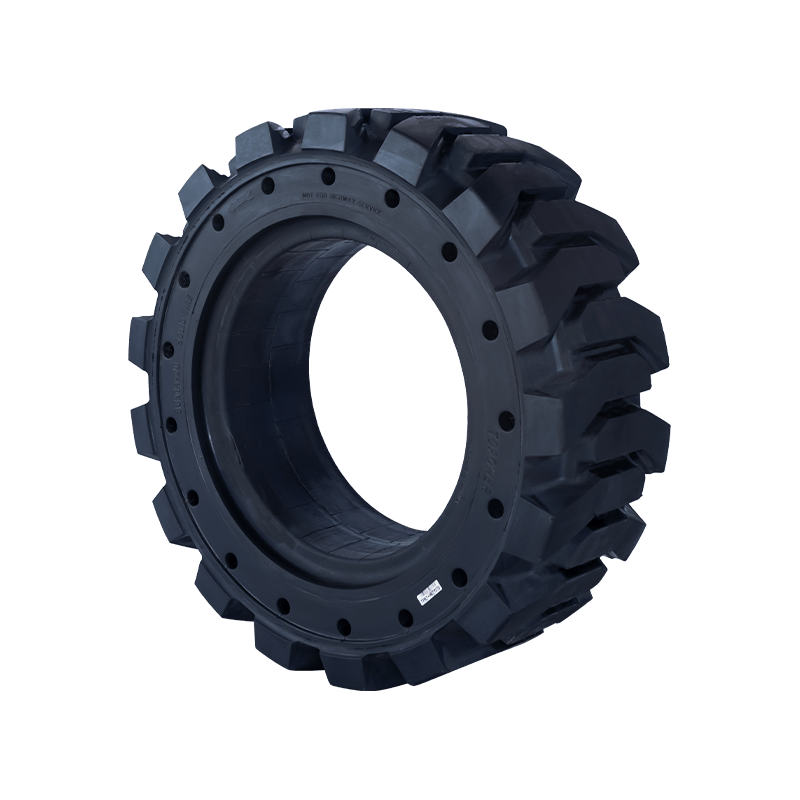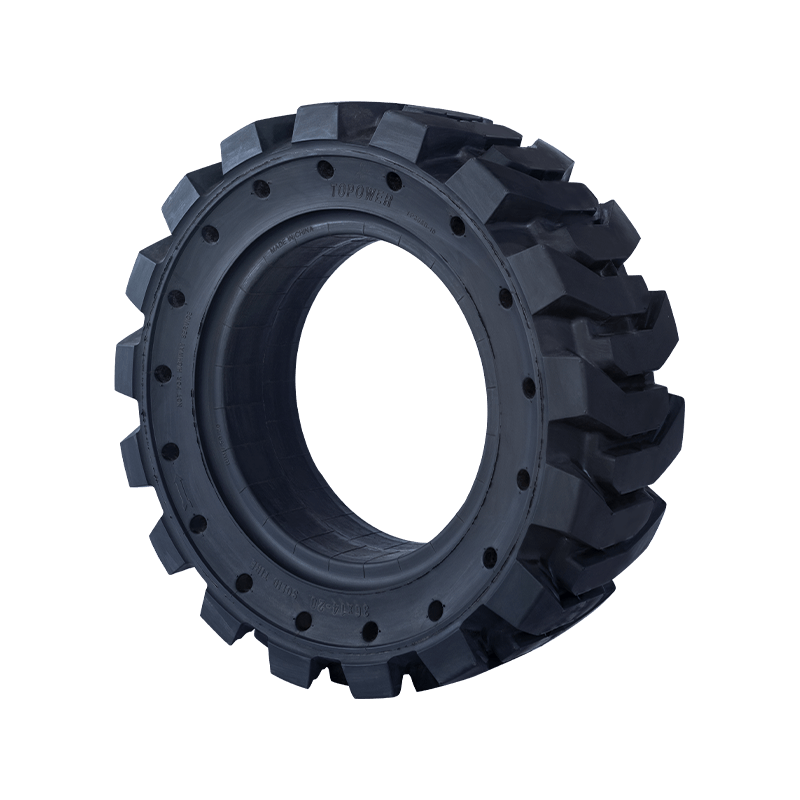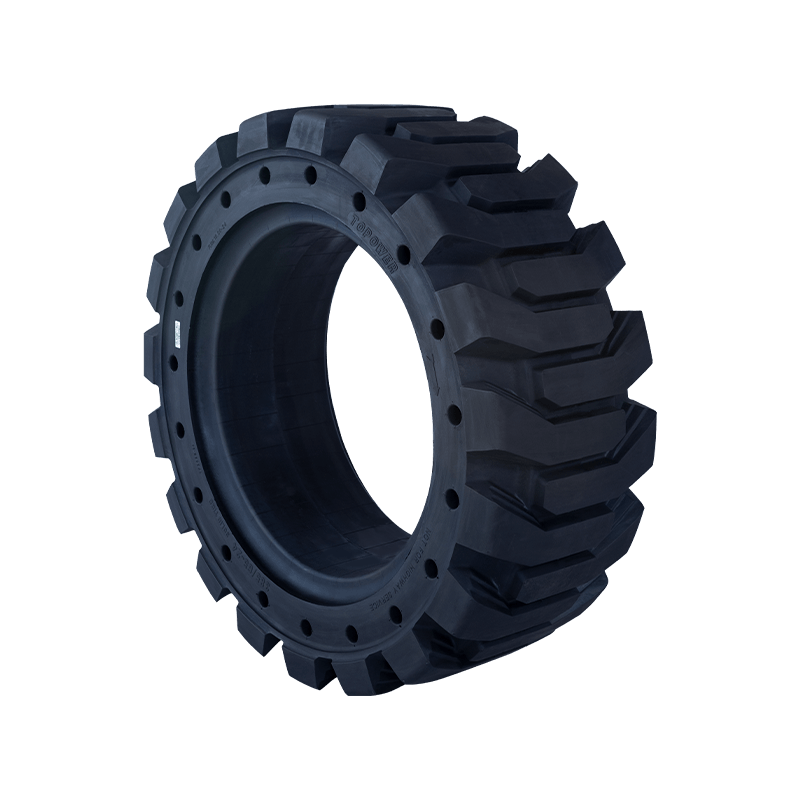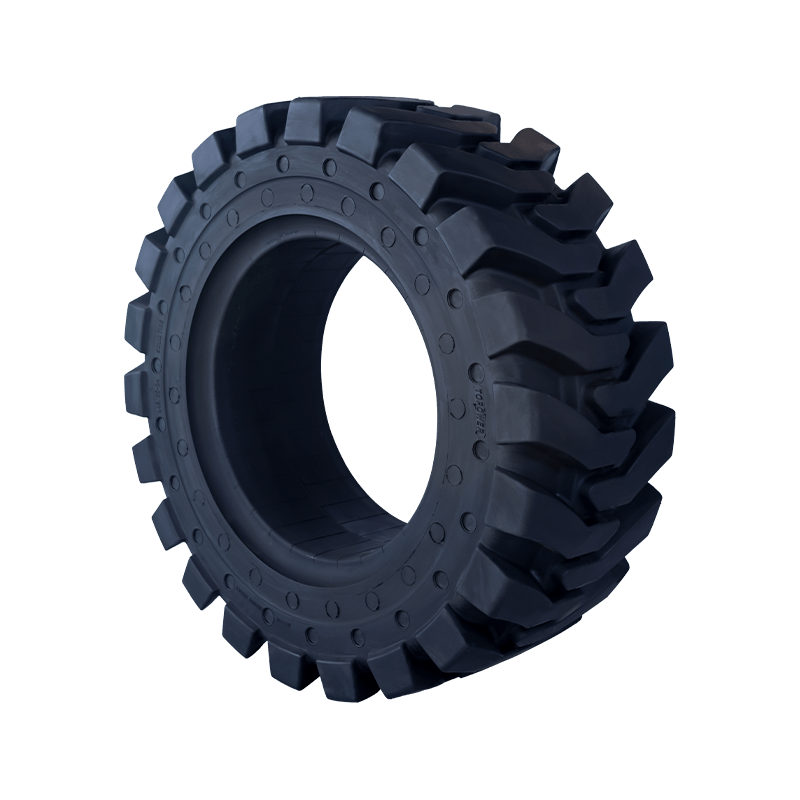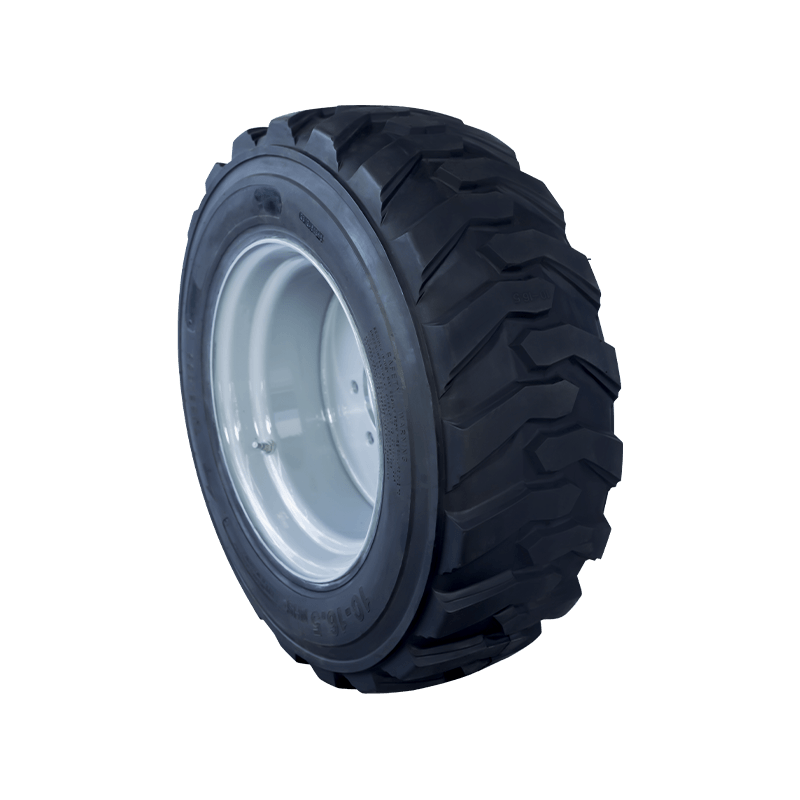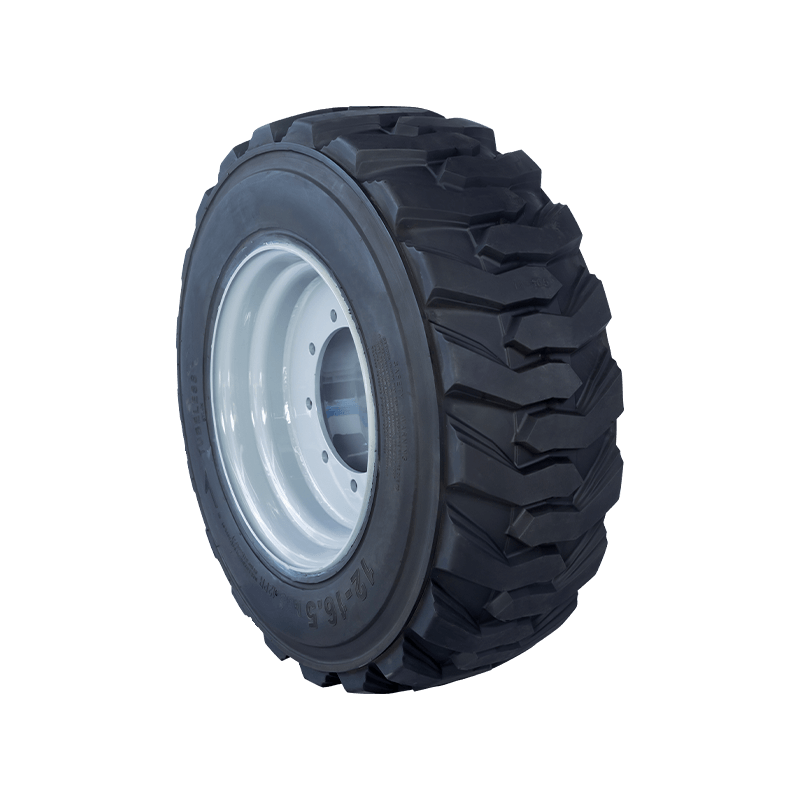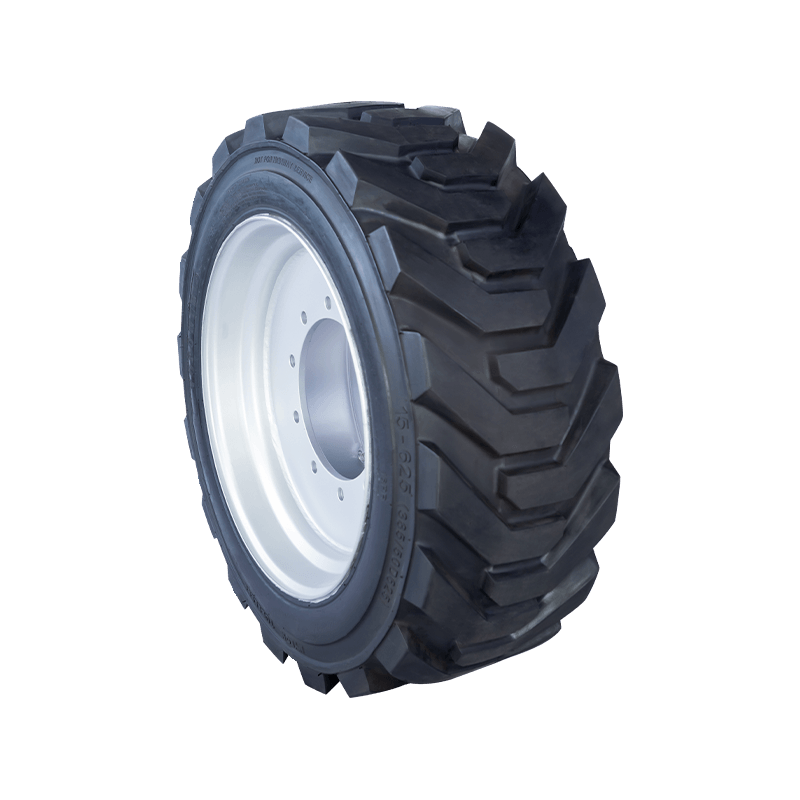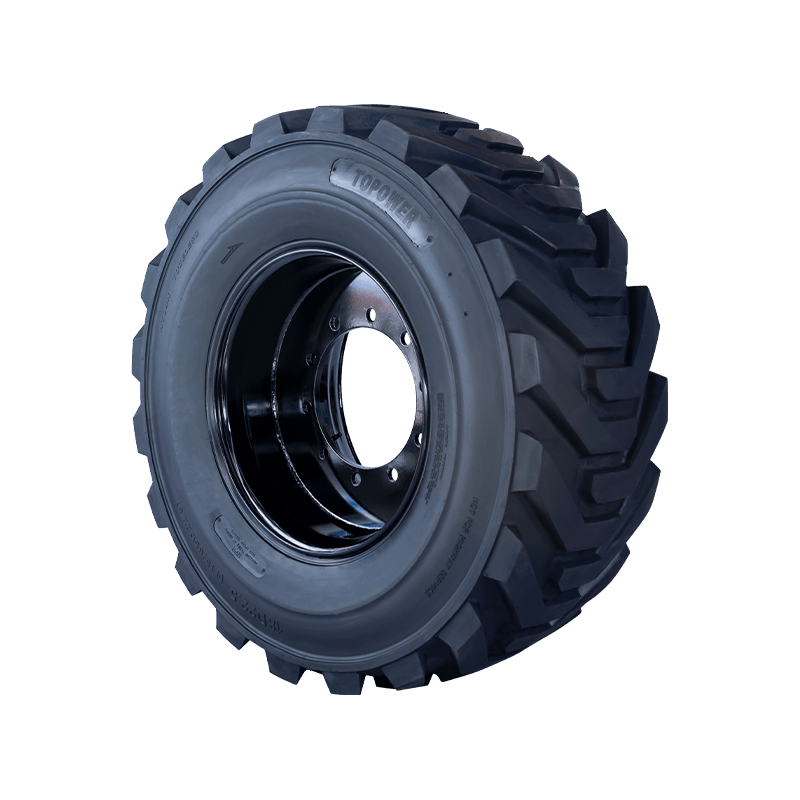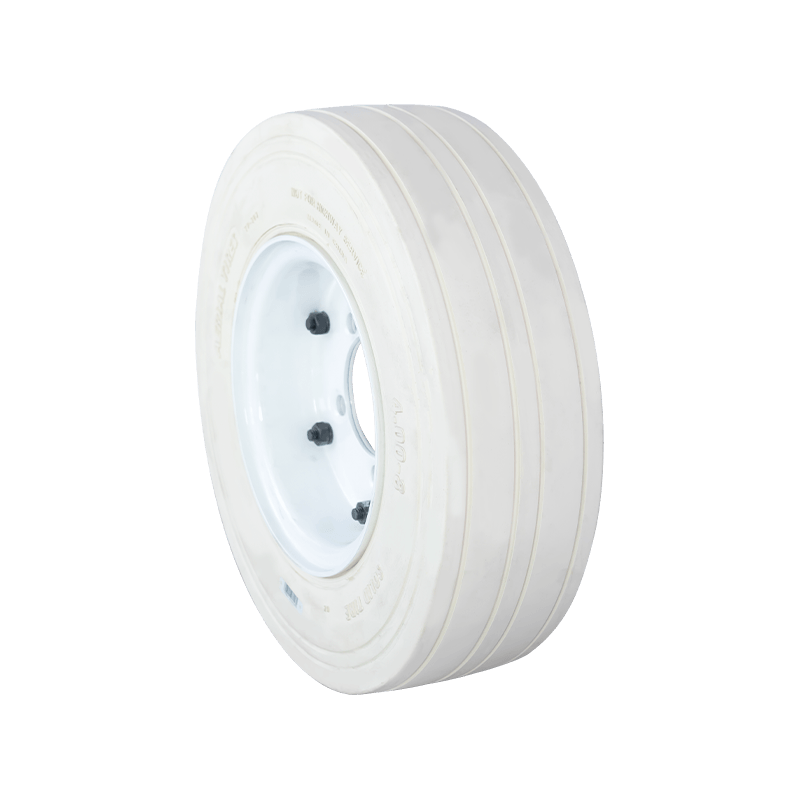Tire blowout, air leakage, difficulty in maintenance? Forklift Solid Tyre Solid Tires Solve All Issues!
The main defects of traditional pneumatic tires
Easy to blow out, there are safety hazards:
Pneumatic tires rely on compressed air for support. Once punctured by sharp objects or abnormal air pressure, it is very easy to blow out. This will not only cause the vehicle to suddenly lose control, but may also cause personal injury in serious cases, especially when the forklift is turning at high speed and running under heavy load.
High maintenance cost, frequent inspection and maintenance are required:
Pneumatic tires need to check tire pressure, add air, and repair leaks regularly, especially in continuous operation or high temperature environment in summer, tire pressure changes frequently, maintenance workload is large, and labor costs and downtime are indirectly increased.
Not suitable for use in harsh environments:
In complex road conditions with more nails, gravel, glass, etc., pneumatic tires are very easy to be punctured, affecting the continuity of operation. Wet, oily, and corrosive places will also accelerate tire aging and shorten service life.
How does Forklift Solid Tire solve these problems?
In response to the above problems, Forklift Solid Tyre provides a safer, durable and economical solution through structural design and material innovation:
Explosion-proof design completely eliminates the risk of tire blowout:
Forklift solid tyres do not contain gas and do not need to be inflated. The possibility of tire blowout is eliminated from the structure. Even if they are pierced by sharp objects, they will not be damaged or lose pressure instantly, which greatly improves the safety of operation. They are particularly stable in high-risk scenarios such as high loads, frequent turns or warehousing and logistics.
Maintenance-free and low operating costs:
Forklift solid tyres do not need to be inflated or repaired regularly, and their performance will not be affected by insufficient air pressure. They almost achieve a zero-maintenance state of "install and forget". This not only saves a lot of manual maintenance time, but also avoids equipment downtime and work delays caused by tire problems.
Adapt to harsh working conditions and have a longer service life:
Made of highly elastic rubber composite materials, Forklift solid tyres have excellent wear resistance, cut resistance and chemical corrosion resistance. It can be used in a variety of complex environments such as iron filings, glass slag, stones, oil stains, wet and slippery ground, etc. It is not easy to be damaged, and its life span is 2-3 times longer than that of pneumatic tires.
Stable structure and strong bearing capacity:
Since there is no internal cavity, the Forklift Solid Tyre has a high overall density and a stronger bearing capacity. It can still maintain stable deformation during long-term high-load operation, and is especially suitable for heavy industrial vehicles such as electric forklifts, internal combustion forklifts, and stackers.
Comparison with traditional pneumatic tires
Cost comparison: Long-term use is more cost-effective
Although solid tires are slightly higher in the initial purchase cost than pneumatic tires, their overall cost is significantly lower from a long-term use perspective. This is mainly due to its following characteristics:
Longer service life: Solid tires adopt high-strength rubber integrated molding design, which is wear-resistant and cut-resistant, and is not easy to pierce or age. The service life is usually 3 to 5 times that of pneumatic tires;
Lower replacement frequency: no need to replace tires for a long time, saving labor and shutdown costs caused by frequent purchases and replacements;
Reduce indirect losses: Avoid chain losses such as equipment shutdown, cargo damage, and delayed delivery due to tire blowouts.
Safety comparison: no risk of tire blowout, reduce work-related accidents
The 100% tubeless structural design of solid tires completely solves the safety hazards of pneumatic tires, especially in the following aspects:
Eliminate the risk of tire blowout: In extreme working conditions such as high temperature, heavy load, sharp foreign objects, pneumatic tires are prone to burst suddenly due to abnormal air pressure or tire wall damage, causing equipment to be out of control or goods to dump, which is very likely to cause personnel injury;
Improve operational stability: the solid tire structure is tight, not affected by tire pressure fluctuations, maintain good grip and rollover resistance during operation, suitable for complex environments such as high-speed turning and slope operations;
Enhance the adaptability of the use environment: Even if working in harsh fields such as nails, gravel, metal slag, etc., solid tires remain stable, greatly improving the safety guarantee of operators.
Maintenance comparison: no need to check tire pressure regularly, reducing labor costs
Traditional pneumatic tires need to be regularly tested for tire pressure to check whether there are problems such as air leakage, bulge, uneven wear, etc., otherwise it will affect safety and service life. Solid tires have the following maintenance advantages:
Completely free of inflation: There is no gas in the structure, no inflation or leakage, reducing the frequency of daily inspection;
Low maintenance frequency: Just check the wear level of tires regularly in daily life, and the maintenance cycle is greatly extended;
Reduce downtime: No frequent suspension of operations due to tire repair or inflation, which helps improve equipment utilization;
Reduce labor investment: Professional maintenance personnel are no longer required to frequently detect tire pressure or perform tire repair operations, thereby saving about 30% to 50% of manual maintenance costs.
Here is a comparison table of airless tires and traditional pneumatic tires in terms of cost, safety and maintenance:
| Comparison Item | Airless (Solid) Tire | Traditional Pneumatic Tire |
|---|---|---|
| Cost Comparison | Slightly higher initial cost, but longer lifespan and fewer replacements, resulting in lower total cost; e.g., a warehouse reduced tire costs by about 30% over 5 years. | Lower initial cost, but prone to wear and blowouts, leading to frequent replacements and higher long-term expenses. |
| Safety Comparison | No risk of blowouts, high stability, effectively reduces operational accidents for forklifts, carts, etc. | Risk of blowouts, especially under heavy loads or high temperatures, increasing the likelihood of workplace injuries. |
| Maintenance Comparison | No inflation or pressure checks required, saving time and labor on maintenance. | Requires regular pressure checks, patching, and repairs, increasing labor and maintenance workload. |
Core advantages of the product
Ultra-high load-bearing capacity:
Solid tires are pressed from an overall high-density rubber material, without any cavity or inflatable structure, and have a load-bearing capacity far exceeding ordinary pneumatic tires. Its unique structural design enables it to withstand large tonnage loads for a long time without deformation or structural fatigue. It is especially suitable for high-intensity working conditions such as heavy logistics, container loading and unloading, port transportation, warehousing and handling, and metallurgical plant areas. Even in harsh working environments such as high temperature, frequent start-stop or continuous operation, the tire structure can still be maintained stable and smoothly, providing a reliable support foundation for heavy-duty equipment and ensuring operation continuity and safety.
Wear-resistant and cutting-resistant:
For sharp objects, rough ground or metal debris environments common in industrial sites, solid tires use high wear-resistant rubber and cutting-resistant layer, which have excellent surface strength and anti-external tear properties. Compared with ordinary tires, its service life can be extended by more than 3 to 5 times, greatly reducing tire damage, replacement frequency and accessories inventory pressure. Whether in steel plants, construction sites, or in stone processing areas, or in high-wear areas with multiple impurities such as mines, they can maintain good performance, effectively reducing operating costs and fault downtime.
100% explosion-proof tire:
Solid tires adopt a fully solid core design without inner tubes, fundamentally eliminating common air leakage, puncture and tire blowout problems of pneumatic tires. Especially in high-risk scenarios such as high-speed operation, load offset, and sharp foreign objects on the ground, traditional tires are prone to air pressure imbalance or tire blowout, causing equipment damage or personnel damage. Solid tires, thanks to their integral structure and high elastic rubber buffering characteristics, can operate stably even on harsh ground, effectively ensuring the operating safety and personal health of equipment operators. They are particularly suitable for ports, logistics warehouses, high-temperature factories and other environments with strict safety requirements.
Maintenance-free:
Unlike pneumatic tires that require regular inflation, check tire pressure, repair of air leakage and other maintenance procedures, solid tires do not require human intervention during the entire use cycle due to their solid structure without gas support. Enterprises do not need to arrange full-time personnel to conduct daily inspections or emergency repairs, which significantly reduces labor investment and equipment downtime. This advantage is particularly outstanding in industrial scenarios with multiple shifts and 24-hour operation, which can significantly improve the equipment startup rate and logistics and transportation efficiency, allowing managers to truly achieve a one-and-one experience of "installing it with peace of mind".
Environmentally friendly and non-marking:
For places such as food processing plants, pharmaceutical factories, cold chain logistics warehouses, electronic cleaning workshops, etc. that require extremely high ground cleanliness and pollution control, solid tires also provide a "Non-marking" version, using a special rubber formula that does not contain carbon black. Even if used for a long time, it will not leave any black tire marks or rubber residues on the ground. This not only helps keep the workshop clean and reduces the cleaning frequency and cost, but also complies with industry clean standards such as GMP and HACCP, helps enterprises improve their overall environmental protection image and industry compliance, and is an ideal industrial tire choice in a clean environment.
Advantage comparison table:
| Key Advantage | Description | Benefit |
|---|---|---|
| Ultra-High Load Capacity | High-density solid structure, resists compression and deformation | Capable of bearing heavy loads; suitable for high-intensity operations |
| Wear & Cut Resistance | Industrial-grade rubber, resistant to wear, punctures, and cracks | Extends service life by 3–5 times, reducing replacement costs |
| 100% Puncture-Proof | No air-filled design, completely eliminates blowout risks | Enhances operational safety, protects both personnel and equipment |
| Maintenance-Free | No need for inflation, pressure checks, or patching | Reduces labor requirements and increases equipment uptime |
| Eco-Friendly & Non-Marking (Optional) | Carbon-black-free, leaves no floor marks, suitable for clean environments | Ideal for food, pharmaceutical, and electronics industries; environmentally compliant |
How to choose the right forklift solid tire?
Choosing the right solid tire can not only improve the operating efficiency of the forklift, but also extend the tire life and reduce maintenance costs. The following key factors should be considered when choosing:
Select the tire grade according to the load requirements
Under different working conditions, the required load weight of the forklift varies significantly:
Light load/medium load scenarios (such as storage and distribution centers, finished product warehouses): standard solid tires can be selected, emphasizing smooth driving and comfort, and better shock absorption performance.
Heavy load/overload scenarios (such as steel yards, port container handling): high-strength reinforced solid tires should be selected, with higher load capacity and structural support to avoid tire deformation and flattening.
It is recommended to confirm the regular operating load of the forklift when selecting, and reserve a 10%-15% safety load margin to avoid tire fatigue damage caused by long-term extreme operation.
Match the tire formula according to the ground environment
Different ground conditions have very different requirements for tires. The following are common ground conditions and recommended tire formulas:
| Surface Type | Description | Recommended Tire Compound/Type |
|---|---|---|
| Smooth Concrete Floor | Dry surface with low abrasion | Standard wear-resistant black tire or non-marking eco tire |
| Oily/Slippery Surface | Slippery, high traction required | High-traction tire (enhanced rubber grip) |
| Rough Asphalt Ground | High friction, fast tire wear | High-durability black tire with reinforced tread |
| Outdoor Gravel/Brick Ground | Uneven terrain with sharp particles, risk of cuts/punctures | Cut-resistant solid tire with thickened body and sidewall protection |
| Wet/Corrosive Environment | High humidity, chemical residues, risk of acid/alkali corrosion | Corrosion-resistant compound tire with stainless or galvanized rim |

 English
English русский
русский Español
Español عربى
عربى



